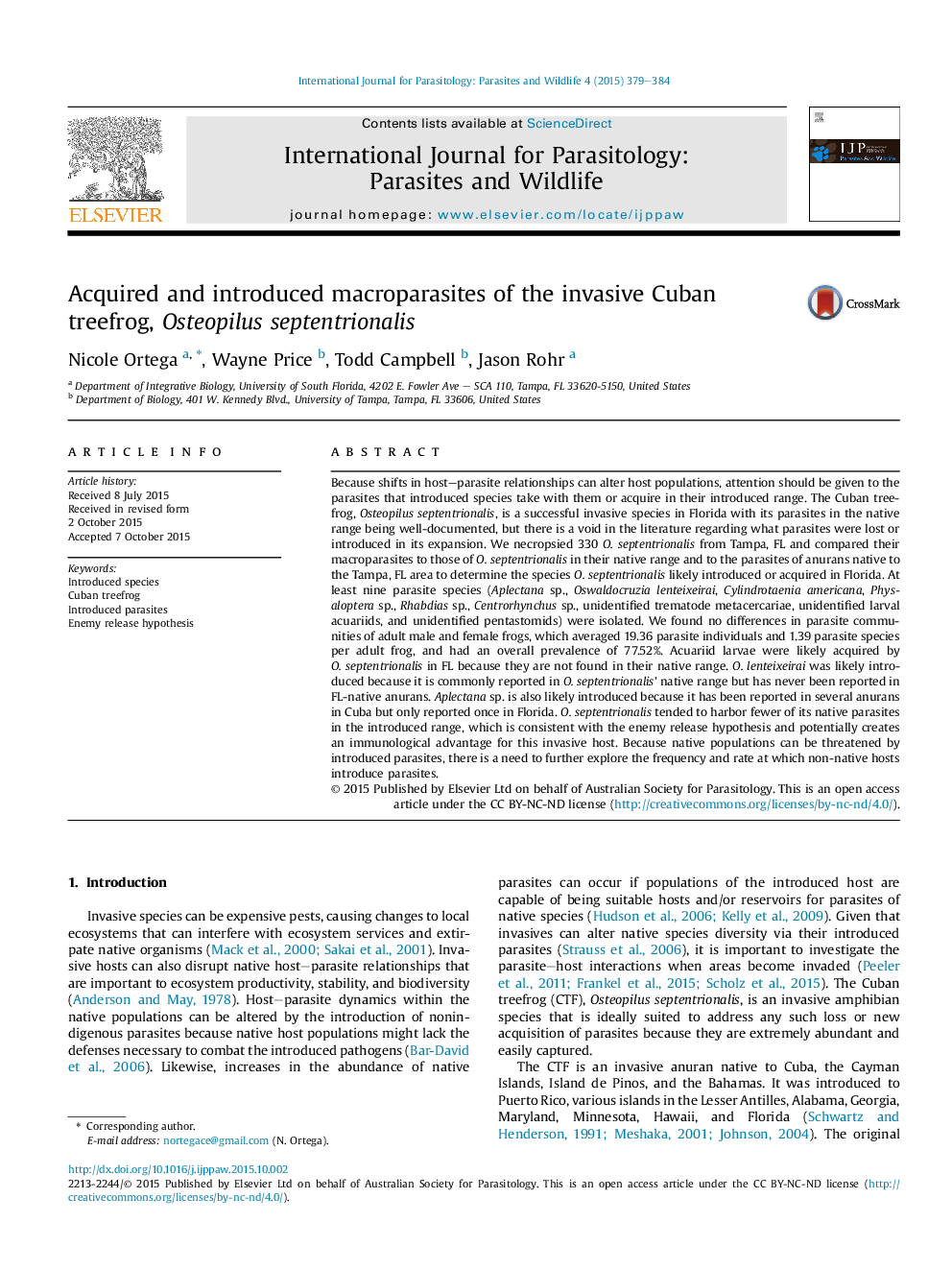| کد مقاله | کد نشریه | سال انتشار | مقاله انگلیسی | نسخه تمام متن |
|---|---|---|---|---|
| 2055197 | 1075733 | 2015 | 6 صفحه PDF | دانلود رایگان |
• We found at least six new host records of parasites in the Cuban treefrog.
• Host type significantly affected parasite mean abundance and mean intensity.
• Hosts were infected with fewer species of parasites than in their native range.
• Introduced parasite prevalence is eight-fifteen times higher in its native range.
Because shifts in host–parasite relationships can alter host populations, attention should be given to the parasites that introduced species take with them or acquire in their introduced range. The Cuban treefrog, Osteopilus septentrionalis, is a successful invasive species in Florida with its parasites in the native range being well-documented, but there is a void in the literature regarding what parasites were lost or introduced in its expansion. We necropsied 330 O. septentrionalis from Tampa, FL and compared their macroparasites to those of O. septentrionalis in their native range and to the parasites of anurans native to the Tampa, FL area to determine the species O. septentrionalis likely introduced or acquired in Florida. At least nine parasite species (Aplectana sp., Oswaldocruzia lenteixeirai, Cylindrotaenia americana, Physaloptera sp., Rhabdias sp., Centrorhynchus sp., unidentified trematode metacercariae, unidentified larval acuariids, and unidentified pentastomids) were isolated. We found no differences in parasite communities of adult male and female frogs, which averaged 19.36 parasite individuals and 1.39 parasite species per adult frog, and had an overall prevalence of 77.52%. Acuariid larvae were likely acquired by O. septentrionalis in FL because they are not found in their native range. O. lenteixeirai was likely introduced because it is commonly reported in O. septentrionalis' native range but has never been reported in FL-native anurans. Aplectana sp. is also likely introduced because it has been reported in several anurans in Cuba but only reported once in Florida. O. septentrionalis tended to harbor fewer of its native parasites in the introduced range, which is consistent with the enemy release hypothesis and potentially creates an immunological advantage for this invasive host. Because native populations can be threatened by introduced parasites, there is a need to further explore the frequency and rate at which non-native hosts introduce parasites.
Figure optionsDownload as PowerPoint slide
Journal: International Journal for Parasitology: Parasites and Wildlife - Volume 4, Issue 3, December 2015, Pages 379–384
